The View from the Hill
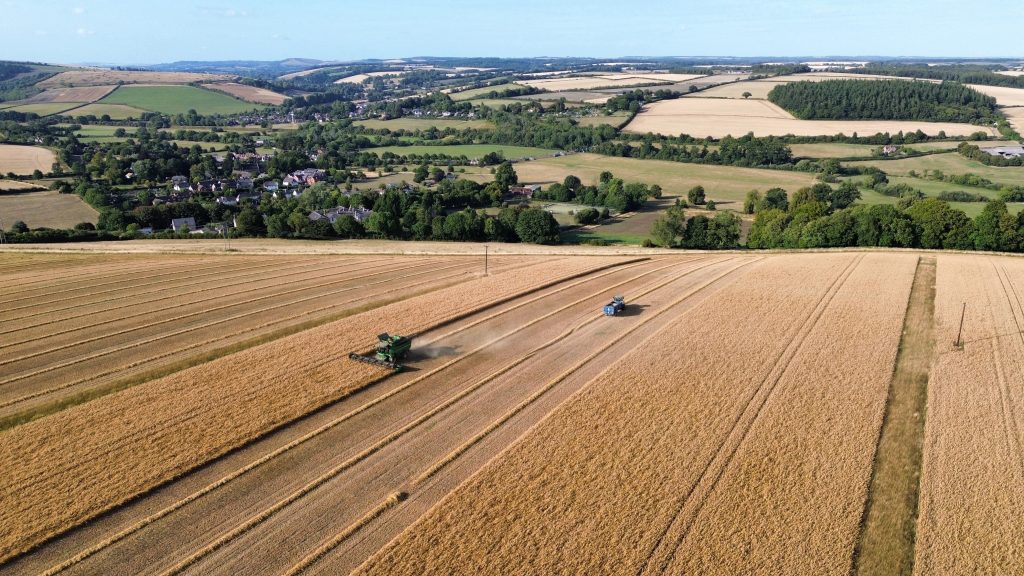
The Knoll is just the best field for views and photographs, especially on a sunny day. This year the field was blessed with a surprisingly lovely spring oat crop from one side to the other, the bicrop beans had come to very little in the drought, so the few that survived remained safely hidden out of sight below the oat canopy. The tragic thing about oats is that they rarely fetch the price they deserve, always below wheat and barley, and the UK oat market is generally feast or famine, it’s a relatively small market, so is easily oversupplied and then the price plummets. This year there is a large carry over of good quality oats nationally, from last year, which also depresses the market.
Enough gloom for now, let’s just enjoy the view across Durweston and Stourpaine with Hod Hill rising up behind (top left), and the Hambledon Hill yew wood just sneaking into the top left corner of the picture. A little to the right, one of the highest points in Dorset is Wyn Green. Everyone on the farm here enjoys working on the Knoll, there is so much to look at apart from just the machine you are supposed to be minding, the Stour valley is stretched out before you, an ancient corridor of communication, comprising river, road, and for a short 100 years, rail, now superceded by bicycle rubber on this stretch, then the hills and woods beyond, stretching upwards and northwards into the Cranborne chase, it’s a spectacular spot. The combine looks tiny from this height, but knowing its real size gives you a clue as to the scale of the landscape.
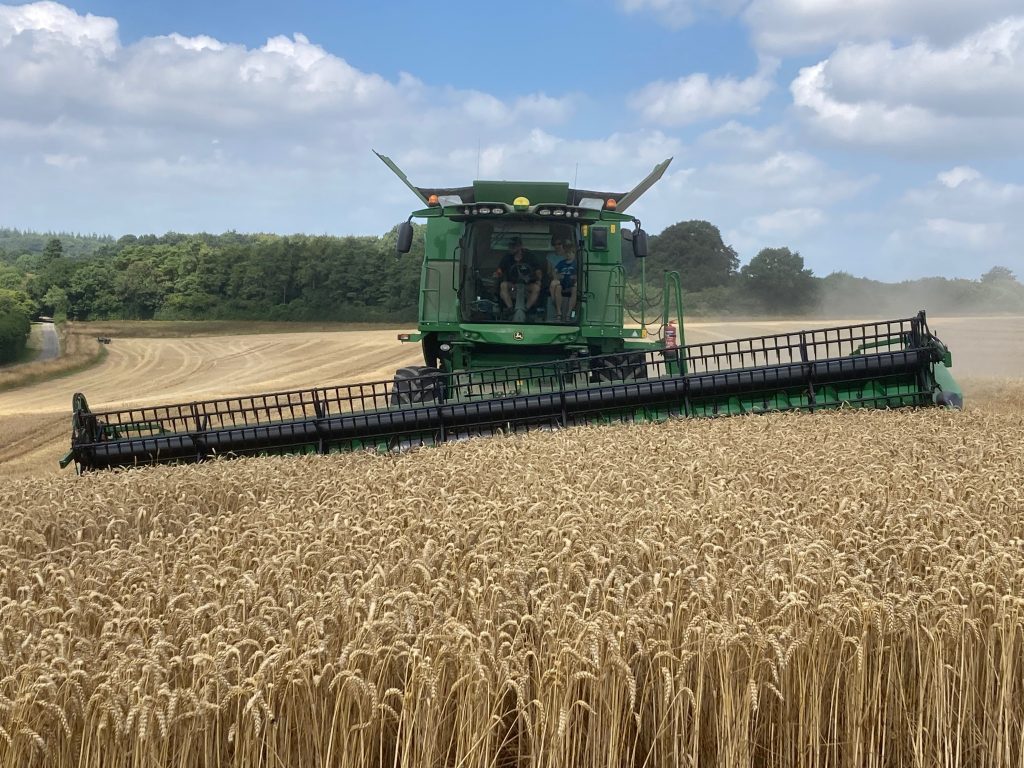
Will at the helm, the combine here is demonstrating its self-levelling ability. This is a John Deere speciality, other manufacturers use different systems in an attempt to replicate this true levelling effect, such as by cleverly shaking the sieves so they throw the grain uphill to utilise the whole cleaning area. An essential component of the combine’s thrashing system is to be able to separate the seed from the chaff, and if you can imagine using a sieve on an angle, the grain will simply fall to the lower side, reducing efficiency hugely. The whole body staying level allows the grain and trash to spread across the whole thrashing system, this allows even distribution of the flow of cleaning air. Not only this, but it is far more comfortable for the driver than a fixed chassis machine. It is old technology now, we bought our first self-levelling combine in 1994, and we are now on the 4th one since then, each one slightly larger than the previous, but we would not be without the self-levelling. It is not available for combines on tracks, because the system relies on the ability of the machine to roll on the tyres as it changes angle, and flat tracks can’t do this. Their advantages of lower ground pressure and superior grip on steep land do not in our estimation outweigh the ability to not spill your tea.
In the 2 weeks since it started raining we have at last seen over 5 inches of rainfall, it would be easy to think everything is fine and dandy on the weather front. The rainfall figures for the individual months of 2025 do not immediately convey the seriousness of this summer’s drought. The rainfall total for 1st March-July 31st this year was the driest we have ever recorded here, 161mm, half of the average for the same period over the last 40 years. The issue has been the prolonged period with only intermittent bursts of rain which did not come to a great deal. And this, following 18 months of well above average rain, has been too much for many soils across the country to deal with. The running annual total of 1061mm at the end of August is not particularly low, and only when last autumn’s very high numbers drop off the 12 month chart might we see a truer reflection of how dry it has been. Unless of course, we end up with another wet autumn. Chances anyone??
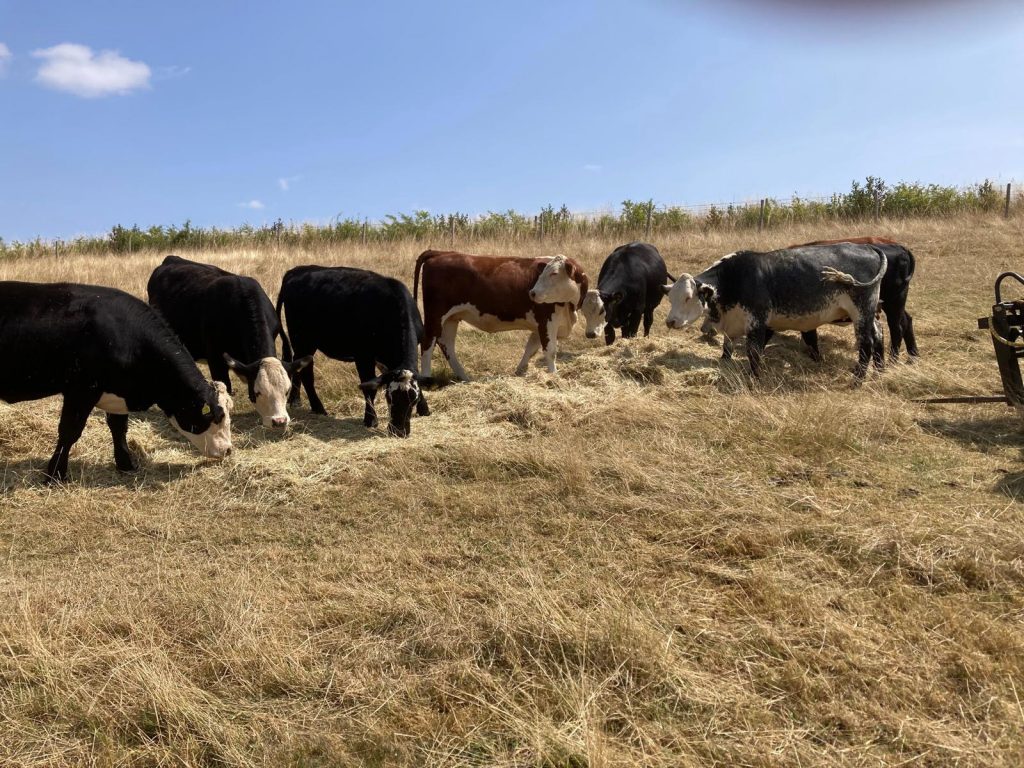
Here are our in-calf heifers tucking into some of our valuable winter hay supply, two groups have been munching through this, while the other groups survive on meagre pickings across the herbal leys, which seem more tolerant of drought than the shrivelled permanent pastures, which give up all too quickly.
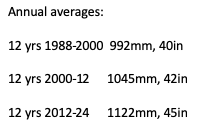
One last point on rainfall. When someone asks whether I believe the climate is changing, I reply that I feel I cannot comment on something that needs measuring in centuries if not millennia. Whereas the evidence of change in rainfall patterns in particular, over recent decades, does merit comment. And if this is because of changes to the gulf stream and El Nino as a result of human activity, the burning of wood and fossil fuels in particular, then it is probably sensible to listen to the experts, and act accordingly. Sad to say there seems little chance of this happening any time soon. Anyway, this little chart shows that over the three chunks of 12 years that make up most of our rain recording period since the mid 80s, average annual rainfall in our corner of Dorset has indeed increased, by 12.5 percent over the 36 years. One could argue about how best to calculate this, but whichever way you look at it, that is a significant increase.
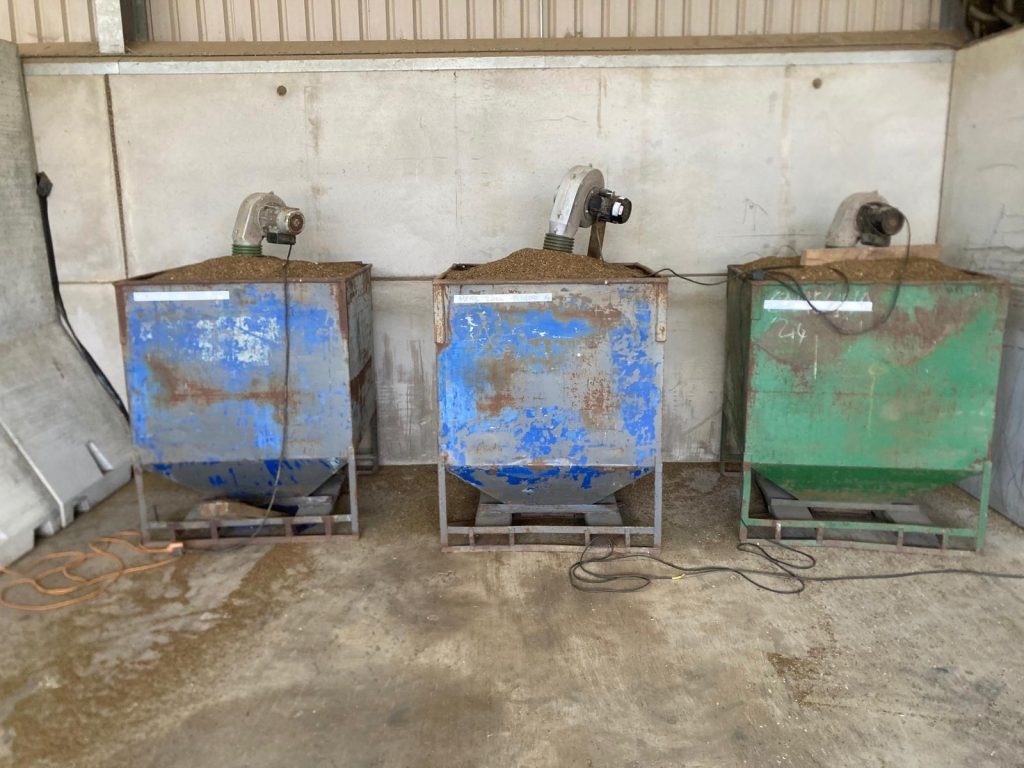
One batch of phacelia, when harvested a few weeks ago, contained quite a lot of green Fathen seed (some know it by the name Goosefoot). So we had to get it dry before we could clean it. Ambient air being as warm as it was at the time, this arrangement (above) did a fine job of drying it all out, and preventing overheating. We were then able to clean it over our old Rutherford cleaner and remove the largest part of the Fathen.
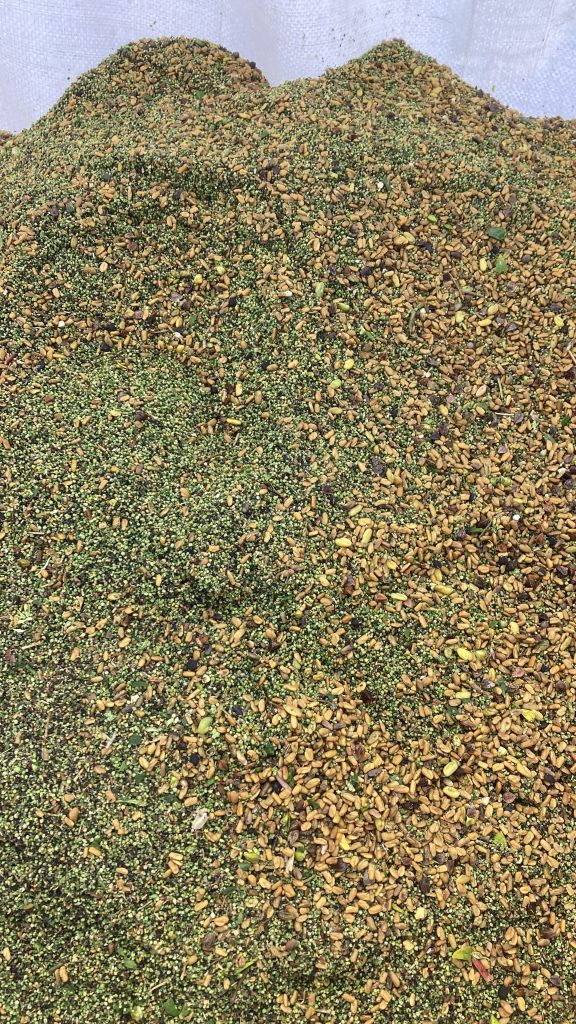
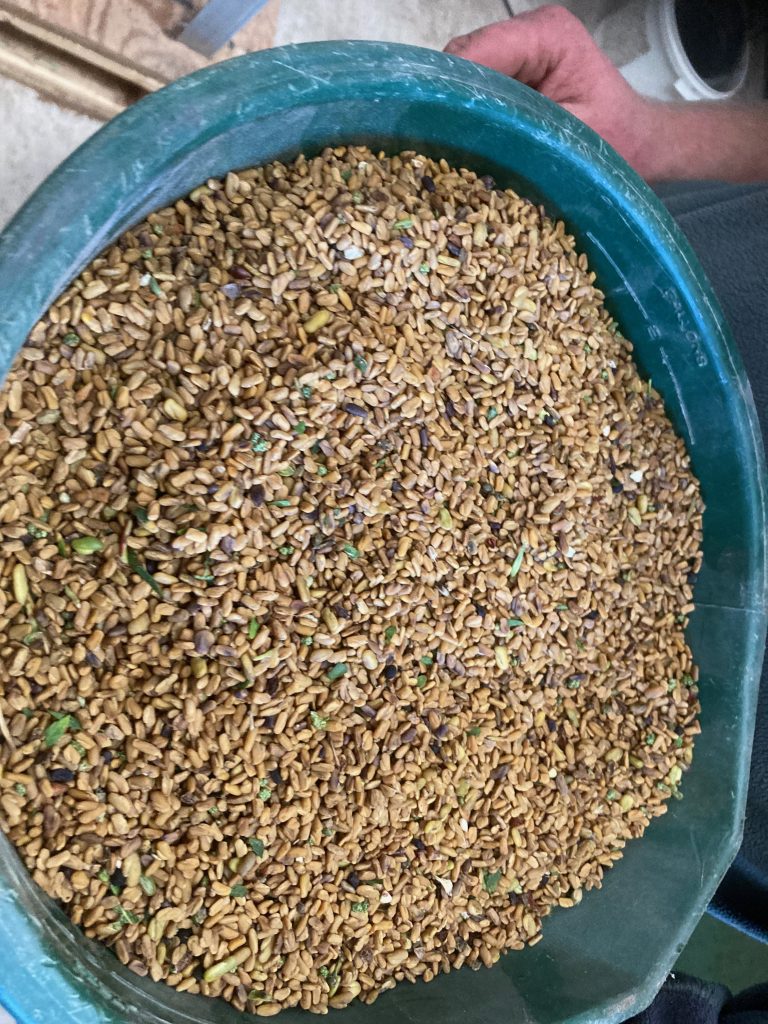
Smaller seed lots, destined for sowing in cover crop mixes, have been run over our newest purchase, a mini cleaner, which although quite slow, does a very useful job. A couple of weeks ago we harvested a small plot of what was supposed to be Fenugreek seed, which produced rather more Fathen than Fenugreek in the combine tank. As we only had less than half a ton we ran it over the cleaner before drying, and did a creditable job. Easier than the Phacelia because the seed size difference was greater. We ended up with only around 50 kg of fenugreek, not really a paying proposition.
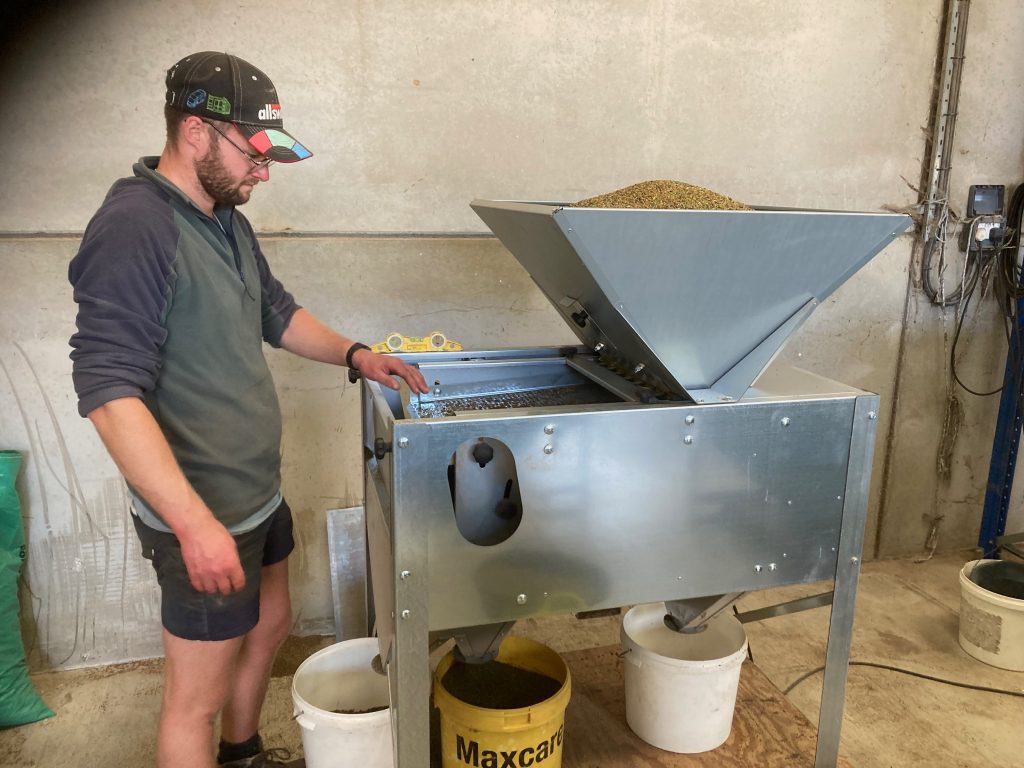
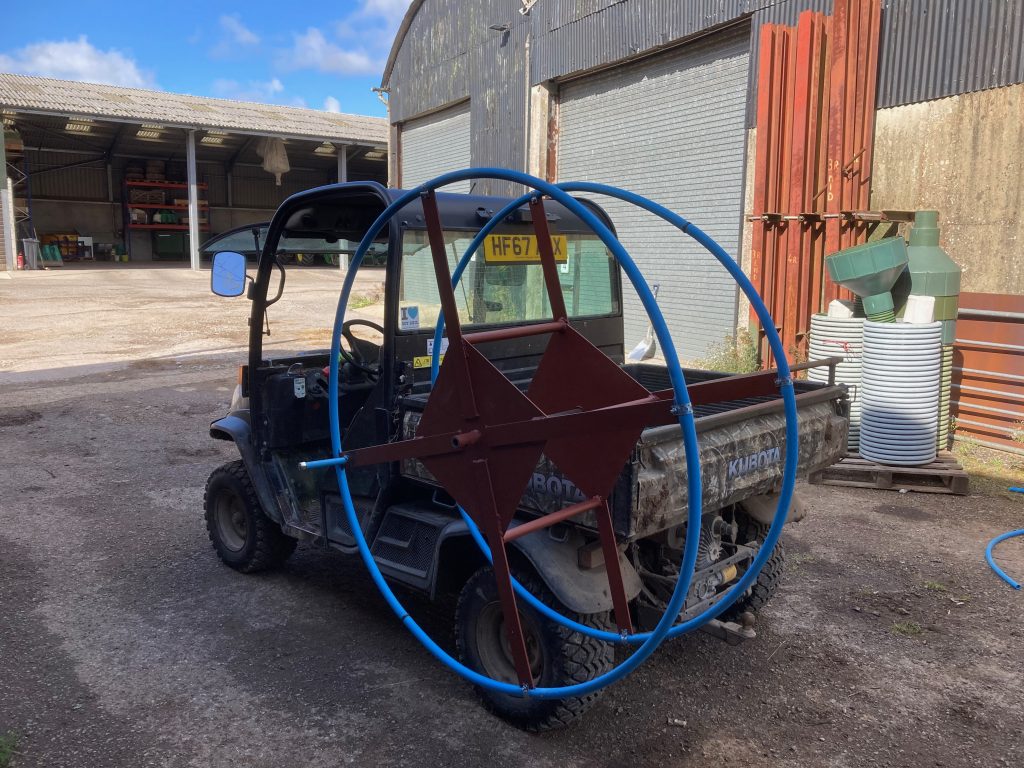
The early finish to harvest this year has enabled us to get on with various other jobs, such as laying on the water supply to new areas of herbal ley, this has involved laying out hundreds of yards of water pipe, and positioning of water troughs so they can serve as large an area of grazing as possible. Brendan has been busy with this, and it was time to construct a gadget to make the job a little easier. Unrolling and rolling up water pipe is quite a challenge, especially if you don’t manage to expel all the water first. The outer wheel is removable, for easy insertion or removal of rolls of pipe.
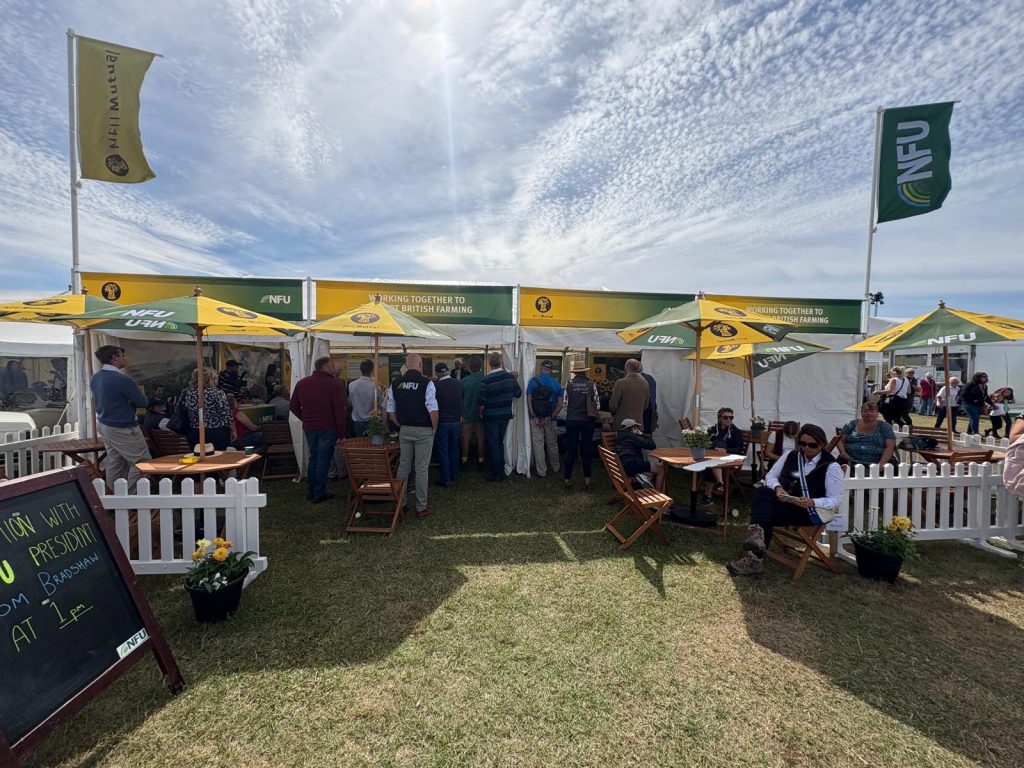
A trip to the County show at Dorchester at the weekend (Sat 7th) was enjoyable as always, and the weather was kind. Tom Bradshaw (NFU National President) was present, and in the NFU tent delivered a pretty sobering assessment of many issues facing agriculture currently. Not least the sudden and unexpected replacement of Steve Reid last week, as Secretary of State at Defra, with the rather less well known Emma Reynolds, formerly Economic secretary to the treasury. Another in a long line of Defra secretaries to be inducted into the wonderful world of landscape and agriculture. Tom had developed a strong working relationship with Mr Reid, which he pointed out is of huge value, even when many areas of difference exist between parties, it is to be hoped that the same can be achieved with the new incumbent. Her origins lie in the countryside so let us be optimistic that she might at least be able to approach the new job with some feeling for the rural. There are some huge issues for her to get to grips with, number one being DEFRA itself, which due to the incompetence of the last government, coupled with the incompetence of the new one, has made an utter hash of the budgetary controls required to get the new environmental schemes working fairly and properly. Some stories are breathtaking, for example where some farmers are allegedly receiving 4 times as much on payments from SFI than they were from the old BPS system. No wonder Defra ran out of money. They still won’t come clean on how much money has been allocated to various SFI iterations, to ‘Capital works’ projects, and to Landscape Recovery projects (rumoured to be very expensive) etc.
It seems that the ‘wonderful’ new payments of public money for public goods, really were too good to be true. If this isn’t sorted out PDQ there are going to be very unfortunate consequences. Tom told us that there are over 5000 farmers coming out of their 5 year Countryside stewardship schemes this autumn, and right now there is nothing for them to re-apply for. We ourselves will be in the same boat in 2 years’ time. What are these farmers supposed to do with the longer term options that they committed to, plough them up?
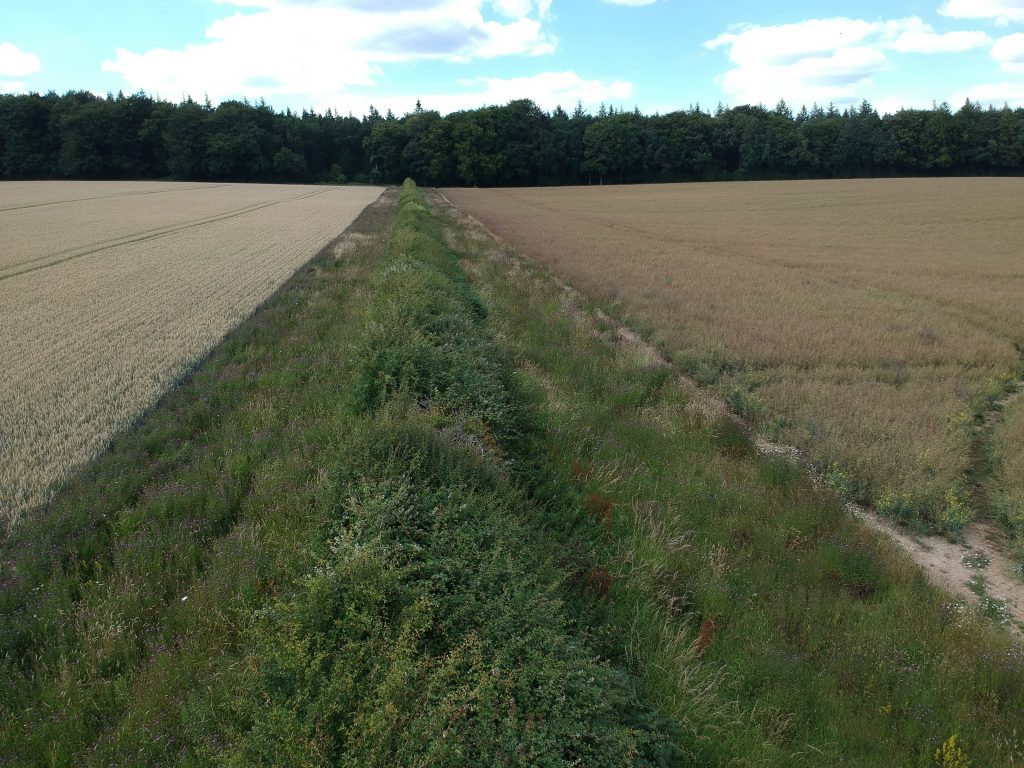
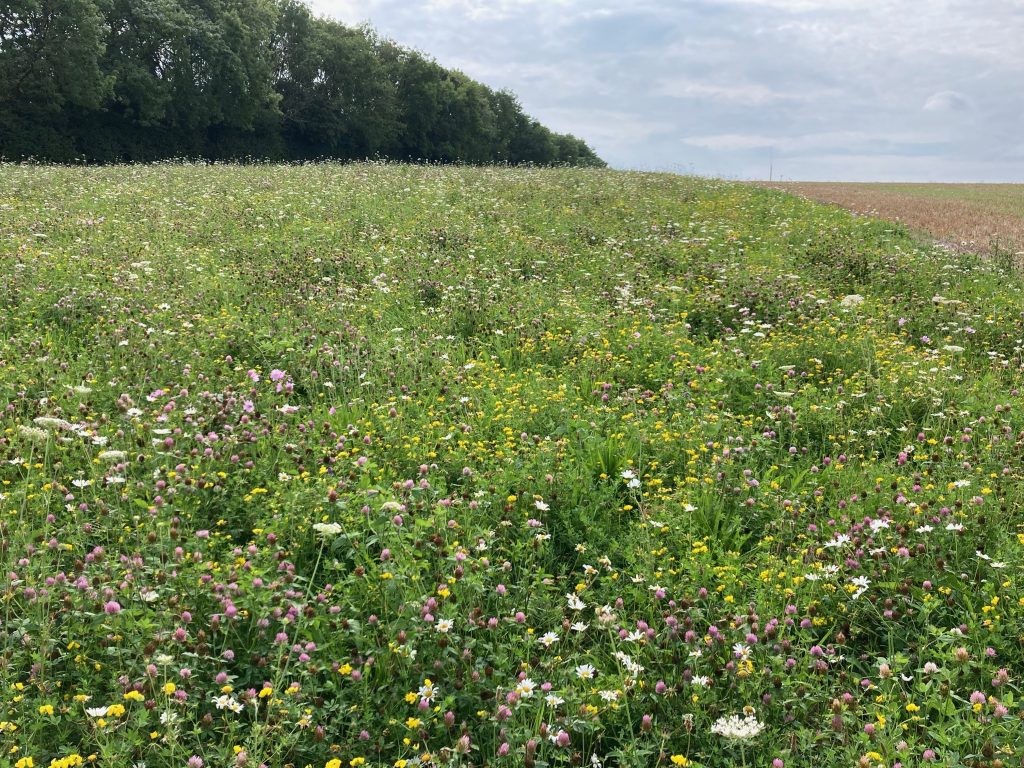
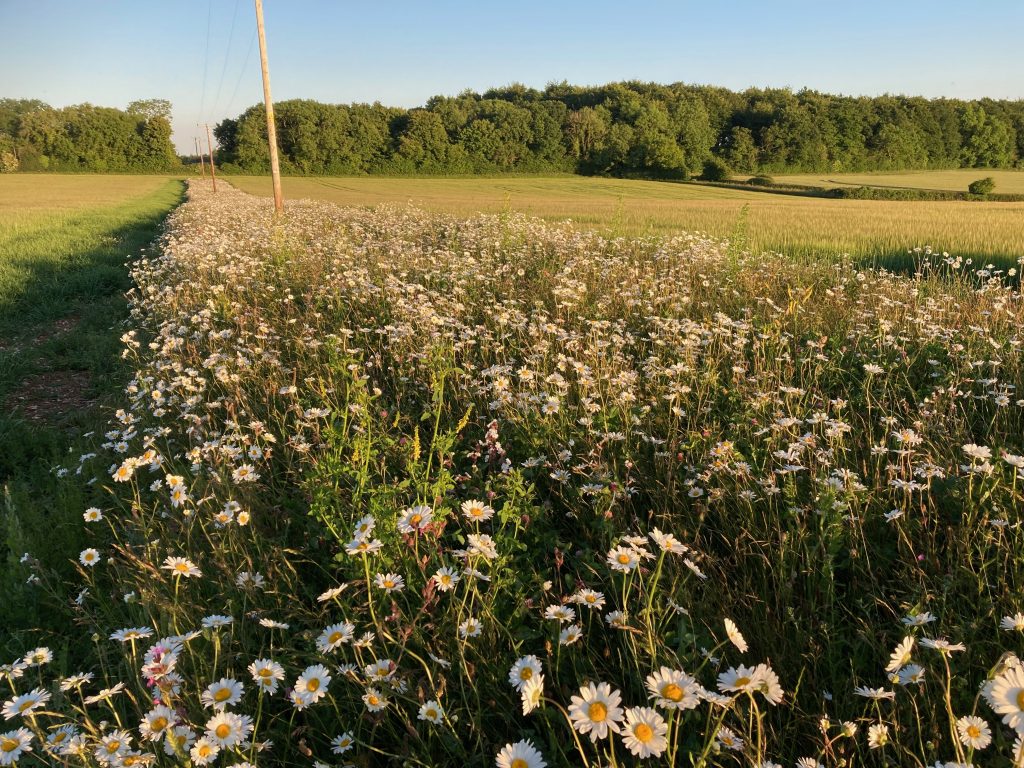
In our case we have 75 ha of flowery field margins, which together with the hedge and a neighbouring field margin can form a 15 or 16 metre wide wildlife corridor between fields. It would be a travesty to cultivate and crop this back to the hedge. There is also arable reversion, where we sowed genetically appropriate seed stock into a small stony arable field, it is now a haven for downland flowers, insects, birds and small mammals, along with grazing animals, which don’t stay there very long as it is not particularly productive in modern ‘productive agriculture’ terms. Without the environmental payments we simply cannot afford to farm like this, there is rent and a load of other bills to pay.
We desperately need the next phase of SFI to be announced, and some consistency and continuity applied to agricultural policy. Did anyone mention food……?
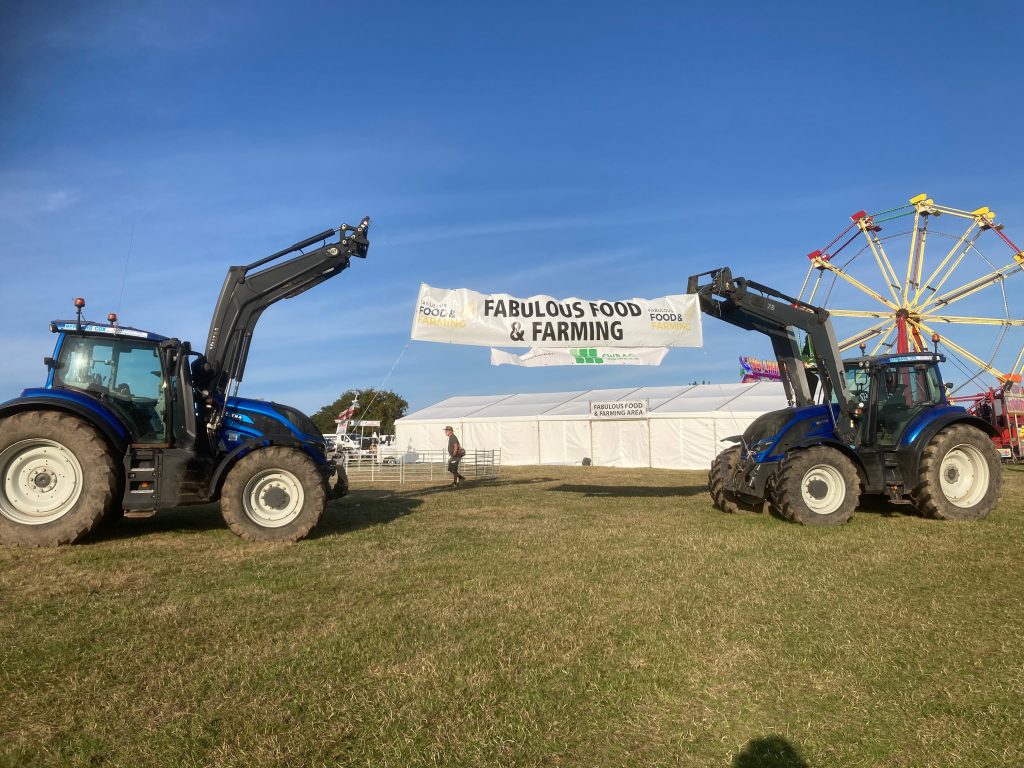
After an hour of intense politicking, a return to the Fabulous Food and Farming area soon restored the spirits. The rest of the author’s day was spent helping out at this educational corner of the show site, where a keen band of volunteers demonstrate all kinds of farming, food and environmentally related activities. There was a huge sow with her six piglets lying in one corner of the tent, a three wheeled vintage tractor grinding wheat outside, numerous outsized jigsaw puzzles, newly constructed by the ever creative Martin family, to solve, a Dike and Son full sized cow to milk, and crop, fermentation and bakery displays. The tent was busy all day, entertaining children and adults of all ages.
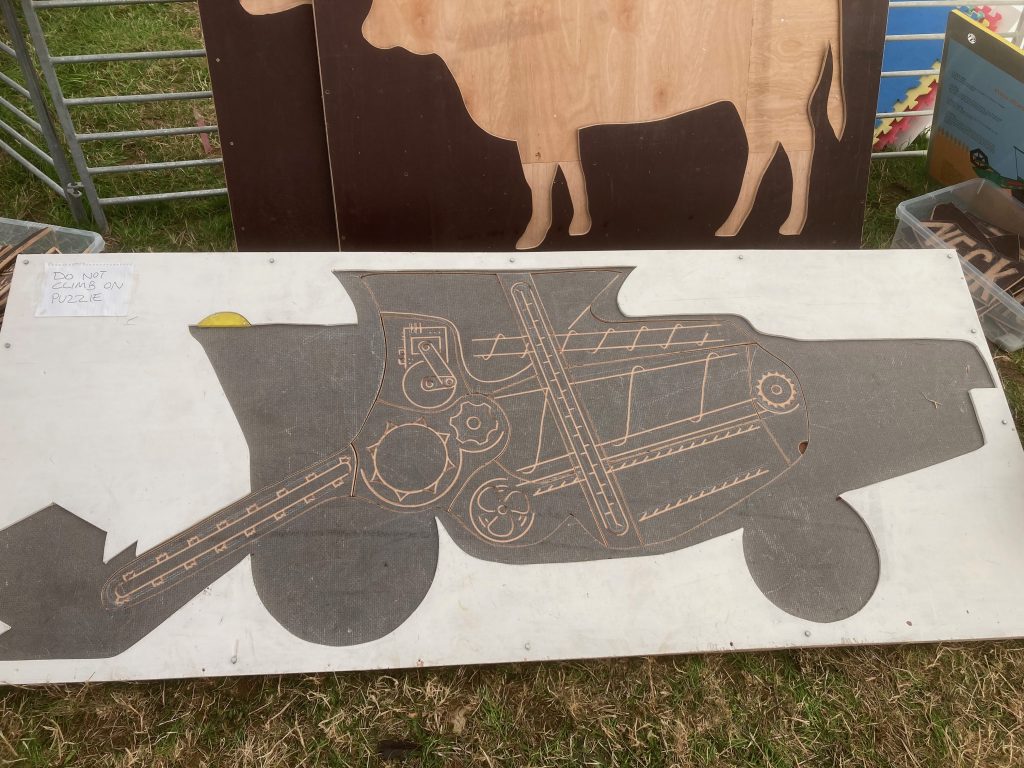
The very neat and impressive giant sized double layer puzzle of a combine and its inner workings, created by the ever resourceful Martins Deverel Farm family. There is a layer of green guards that go on top of this layer, the whole thing attracted a good deal of attention all day.
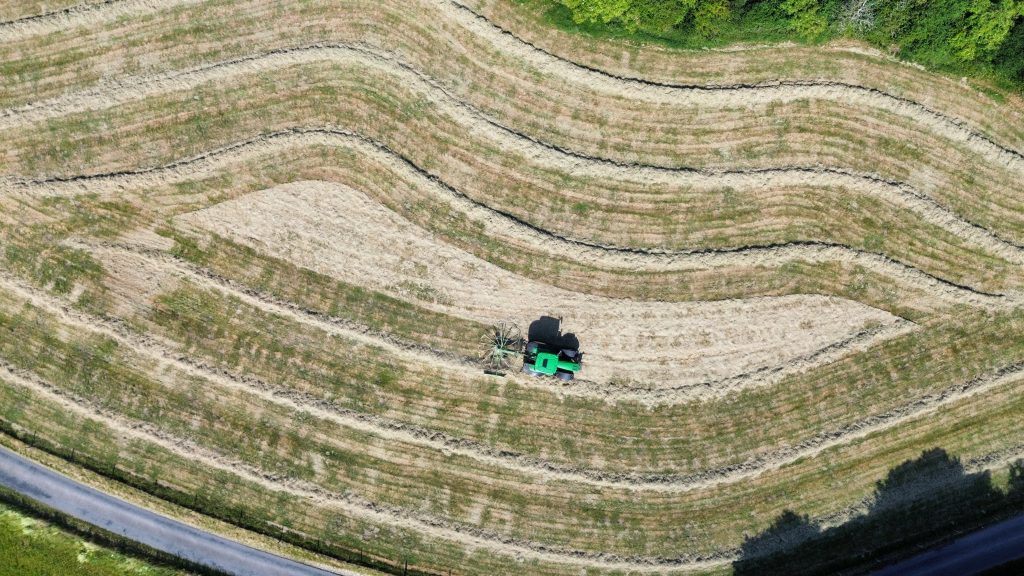
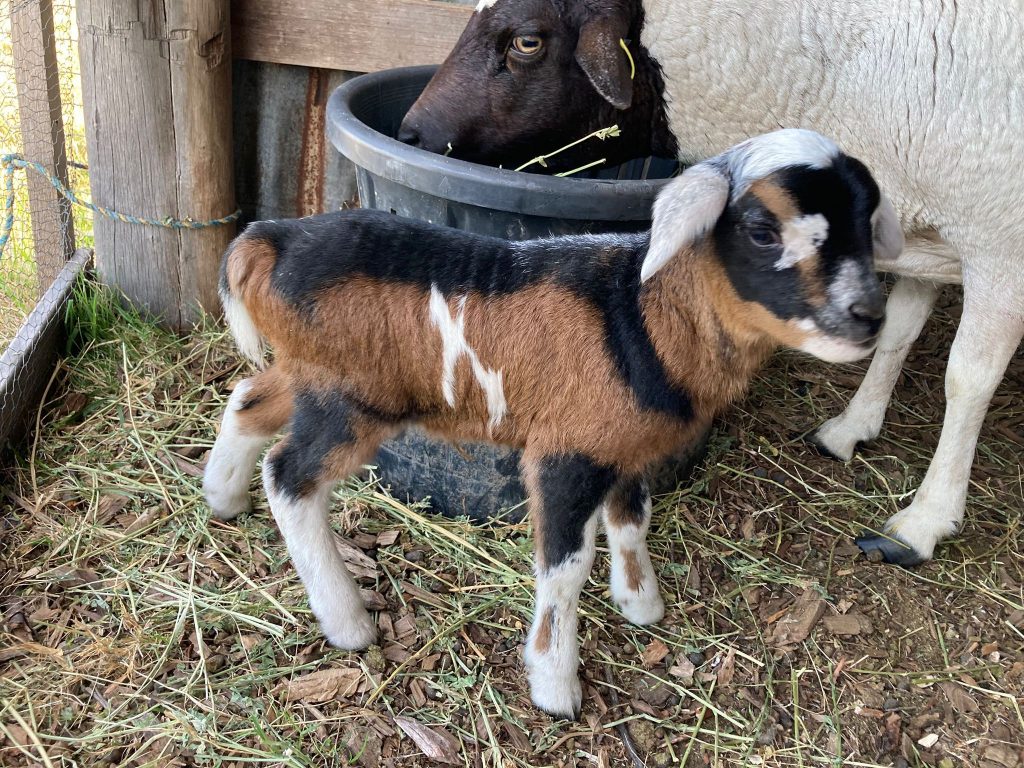
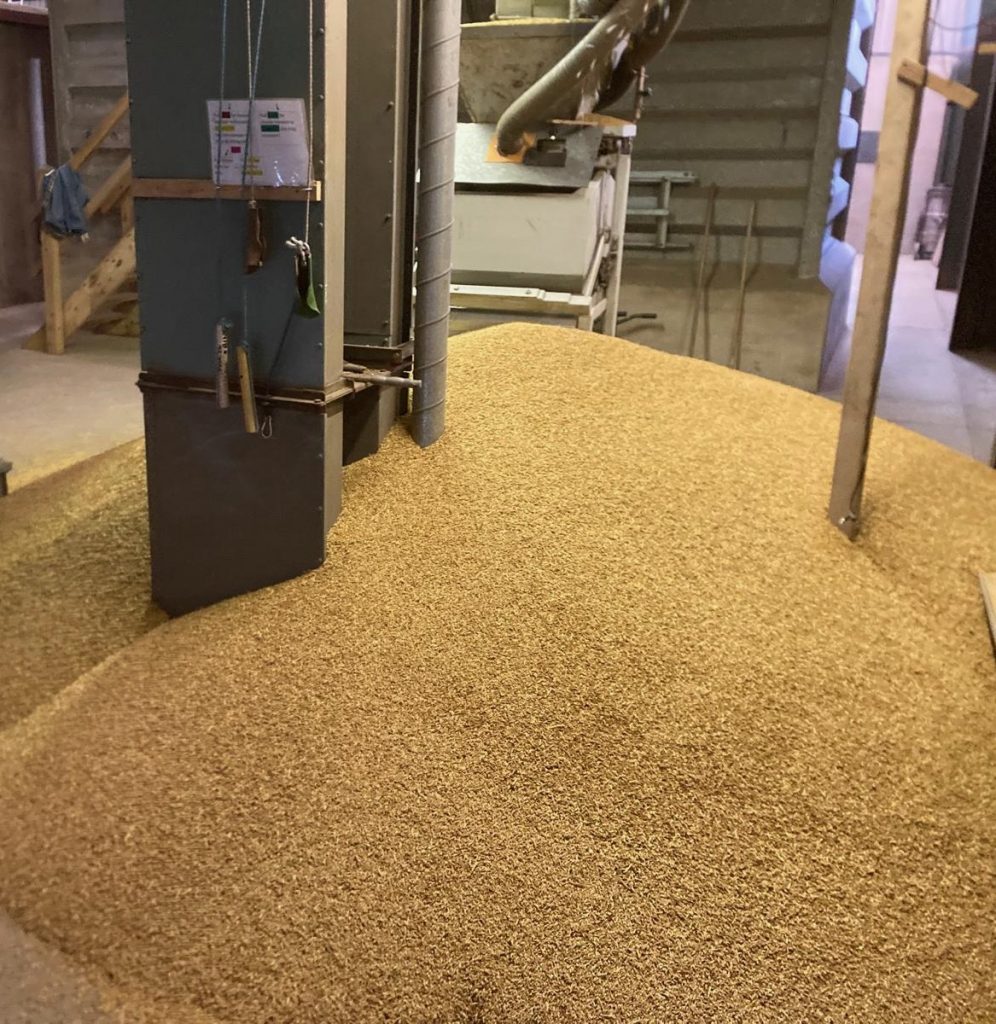
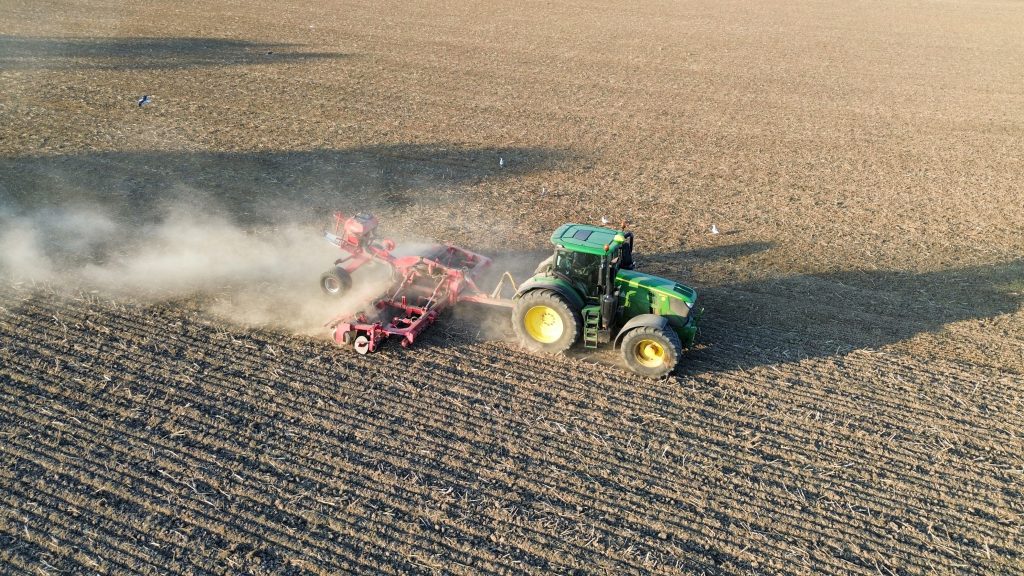
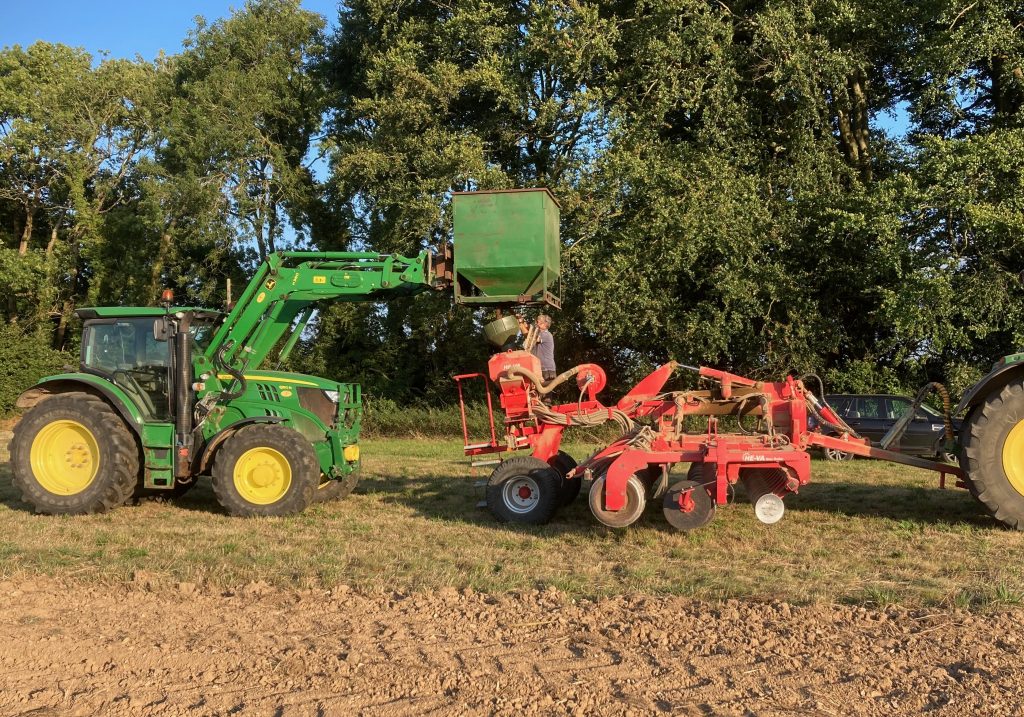
Gary pushing on with sowing cover crop into dust, using the seeder mounted on Heva discs. It looks a lot greener now.
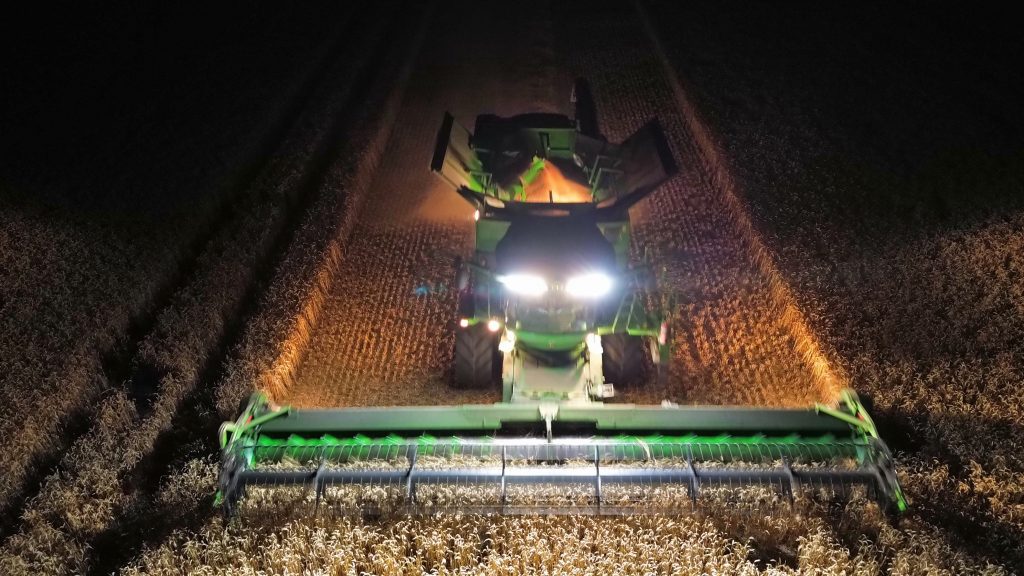

Whilst there is no way one compares farming with the forgotten army, but, I have said over the 60 years in agriculure that some farmers have put up with me, the problem with agricuture is lack of self promotion.
Most denizens of the land want to leave it in better shape than when they started and they nurture the land accordingly. Who is telling the populace that?
Lets just build over everything and buy our food from France or others, they have a policy of revolving government by the looks of th past few days
Rambling Jim
Excellent read as always,thank you
Impressed with the water pipe machine and the mini grain dresser.
I am looking at a rent reduction from my Landlord next year as our farm is actually losing money now even without including me and my Wife’s ‘free’ labour.
The low commodity prices, high input prices cannot go on especially since the price of food is a major source of inflation, we are selling wheat at hardly any more per tonne than it was in 1982 when we left University George.
As a layman, who is fortunate enough to have access to the farm and land surrounding it, I can testify to the noticeable difference
made by farming practises being carried out here. It is a wonderful, if not a daily surprise, to see such abundance of wildlife, flowers, butterflies and insects, whilst walking my dog. I cannot imagine what it is like to be a farmer. I can imagine what our beautiful countryside would be like if they didn’t care for it as they do, whilst trying to make a living. I’m not a political animal and not really sure what ‘SFI’ is – but I read and I’m sure, it is not only the farmer that gains, but we, the general public who live, leisure, and walk the land.
Your rainfall records obviously had me reaching for mine on this cold, wet (hurray) Saturday. So here at Cottonshope, Northumberland, with the rain guage at 1000 feet:
ANNUAL AVERAGES
12 years 1988-1999. 1054 mm. 41”
12 years 2000-2011. 1177 mm. 46”
13 years 2012-2024. 1159 mm. 45”
So over the last 37years our rainfall has increased by c9%, not dissimilar to you. However what is more interesting is how closely aligned our annual rainfall is. Our two farming systems couldn’t be more different. Yes, we may farm 3500 acres but can only carry 1550 ewes plus 380 ewe hoggs (& they don’t winter here) & only have 50 cuttable acres on which to make silage. Altitude, topography & soil type are the major influencers here, rather than rainfall amounts. Snow used to be a huge factor too, but less so in the last 10 years.
Fascinating read as always George, thank you so much
Smashing update – thank you
As ever, George, an excellent update.
Great content as ever and such a surprise to scroll through and see one of my own lambs starring in ‘The View’! She’s a beauty 🥰
Thank you once again for sharing your insights George.